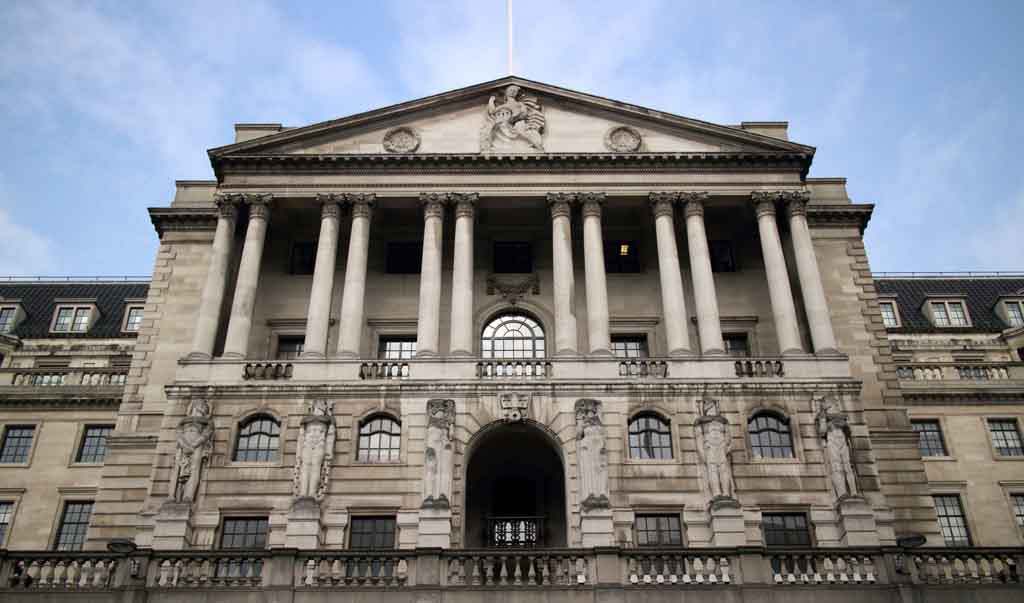09
March 2016
Interest Rates to Stay at Record Low
Economists have predicted that the UK is to continue with its record low interest rates throughout 2016. These predictions come after it was revealed that the service sector suffered a sharp drop in growth last month.
A recent survey has shown that the UK services industry dropped to a three-year low growth rate. It is believed that concerns over a Brexit, the turbulence in global markets and a decrease in the progress of the global recovery have all contributed to a drop in confidence within the sector.
This week marks the seven-year anniversary of interest rates being dropped to their all-time low of just 0.5%. The news will show the Bank of England policymakers that they do not need to worry about a sharp rise in inflation. Mark Carney, the Bank’s governor, has also suggested that interest rates could be dropped even lower if the need presents itself. However, he has ruled out the option of moving rates into negative territory.
The figures from the service sector show that growth in the sector, which makes up the largest in the UK, has grown at the slowest rate since back in March 2013- when there were growing concerns that the economy was heading back into recession.
Markit, a data company, were responsible for the compilation of the report and its contents echoed the mood being felt across the construction and manufacturing sectors. When these sectors are viewed collectively, they demonstrate a slowdown in the UK’s GDP growth and they support the Bank’s current policy of reducing interest rates as opposed to increasing them.
This view was supported by Chris Williamson, the chief economist at Markit, who said:
“The extent of the slowdown will be a shock to policymakers and surely puts to bed any talk of the Bank of England raising interest rates. The focus will instead increasingly shift to whether policymakers may soon need to dig deeper into their toolbox to introduce new measures to shore up the economy with additional stimulus, and what tools might be used,”
The measure of activity put forward by the survey showed that activity fell from 55.6 in January to 52.7 in February. Whilst this still remains above the 50 point threshold that demarcates contraction from growth, it still fell well short of the 55.1 prediction that came about from a Reuters poll of economists.
This image reflects the less than fantastic growth reports from the service sector in China, the eurozone and the US, and it reinforced concerns that demand is dropping all over the world.
Markit went on to say that many British firms had stated that the growing fears around the world economy had culminated to mean that clients were putting off new order placements.
It also highlighted the lack of confidence due to the upcoming EU referendum, which is to be held on the 23rd of June. It went to say that employment growth had also fallen to its weakest level for two and a half years in the month of February.
Williamson said:
“Survey responses reveal that firms are worried about signs of faltering demand, but boardrooms have also become unsettled by concerns regarding the increased risk of Brexit, financial market volatility and weak economic growth at home and abroad,”
JPMorgan, the investment bank, said that the new data about the service sector had resulted in it pushing back its prediction for an interest rates rise. The bank is now predicting that rates will not be increased until either the final quarter of 2016 or the first quarter of 2017.
An economist at JPMorgan, Allan Monks, said:
“The timing of this call depends a lot more on two great uncertainties this year: 1) the possibility of Brexit and 2) downside risks to the global outlook,”
The news that interest rates will remain lower for longer will be welcomed by those who are looking to take out loans in the near future or who already have mortgages. However, it is bad news for savers who may have been hoping to earn a bit more cash for the money they have tucked away.
Hargreaves Lansdown recently carried out analysis that estimated that seven years worth of low interest rates and quantitative easing had come at a cost of roughly £160bn to savers.
The analysis went on to say that the low interest rates had probably contributed to the large increase in the cost of property, stocks and bonds. It also estimated that around £106bn is currently being stored in accounts that pay no interest at all.
When the Bank cut interest rates to 0.5% seven years ago, it followed several other reductions that dropped rates down by 4.5% from a previous level of 5%. When it did this, the Bank also instigated its programme of quantitative easing, which meant it was printing money in order to purchase government bonds in an attempt to hold up the economy. This programme has currently cost around £375bn and is still rising.
One senior analyst at Hagreaves Lansdown, Laith Khalaf, said:
“Loose monetary policy has supported rises in stock, bond and property prices over the past seven years, while annihilating the returns on cash.”
The analysis looked into a large range of financial products to see how they had been affected.
The company said that the mean mortgage rate has fallen by around 31% in that seven year period; this saved borrowers roughly £270 month on the equivalent of a £200,000 repayment. Cheap credit has also supported growth in the housing market, which has resulted in a price increase of 31% in the same period.
The Bank released figures which demonstrate that a borrower with a deposit of 25%, the mean cost of a mortgage with a fixed rate for five years has fallen drastically in the past seven years. When the base rate of interest was first lowered, the average sat at 3.98%, whereas now borrowers will only be paying an average of 2.77%. In the same period rates on two year offers have dropped by 50%; the average is currently 1.95%, down from 3.98%.
This fall in rates was aided by the Funding for Lending scheme that was introduced by the government, which provided building societies with the cash that they needed to be able to lend money out to individuals and small firms. SInce then rates have fallen drastically and high competition within the sector has kept them at a low level.
Khalaf said:
“Mortgage costs have fallen significantly from pre-crisis levels, but this positive effect is laced with an underlying risk. If borrowers get too comfortable taking on high levels of debt at low interest rates, they could be in for a nasty shock if and when rates rise.”
One mortgage broker at London & Country, David Hollingworth, said that people should be aware of the fact that interest rates won’t be low forever and that “it’s not normal and at some point it will change”. Regarding the 1.8 million first-time buyers he said: “you would urge them to prepare for the future and when they can to maybe pay more off their mortgage or to reduce the term”.
Back when interest rates were still high, in November 2007, the average rate of interest for a one-year fixed-rate savings account was 5.99%, However, as the Bank started cutting this rate, savers’ starting losing these high returns; by March 2009, just a couple of weeks after rates had fallen to their record low, the average rate had fallen to 2.7%.
It stayed at around the same level for about three years until Funding for Lending came into force. This scheme reduced the incentive for banks to try and attract retail customers and, as a result, the rates they were offering started to drop. Half a year after the initiative was rolled out, the average interest for fixed one-year accounts had fallen to 2.18%.
The head of Savings Champion, Susan Hannums, said that savers had been subject to “seven long years of pain”. She continued: “Few people would have thought that rates would have remained at this low level for so long and even less the knock-on effects the financial crisis could have had on savers. Today, we’ve hit over 4,000 rate reductions for existing savers, with little sign of this practice slowing down.”
One analyst at Investec, Ian Gordon, said:
“My take on Funding for Lending is that it had an indirect effect on savings rates.”
He went on to say that it achieved its aim of boosting the confidence of banks by lowering the price of credit for those companies. “Fast forward to today, and what hasn’t changed is that the banks’ balance sheets are still strong”.
He also said that banks no longer had to worry about gaining money from savers, so when rates are increased “the banks may be strong-armed into passing on the first one or two increases, but over time I expect they won’t be. The outlook for depositers is bleak. It’s bleak now and it will get bleaker”.
Moving on to investors, Hargreaves Lansdown suggest that those who have put their money into UK shares would have seen an increase of between 87% and 138% if they reinvested the dividends.
They also believe that QE has aided in increased confidence in the markets, whilst at the same time low interest rates have aided companies access debt markets at a lower cost. This is further helped by the attractiveness of dividends compared to savings accounts that are paying out low rates of interest.
Khalaf added that companies such as Unilever, British American Tobacco and Reckitt Benckiser have benefitted from this because they are firms “whose stable dividend payments have seen investors flock to them as ‘bond proxies’, seeing as bonds are paying so little interest”.





